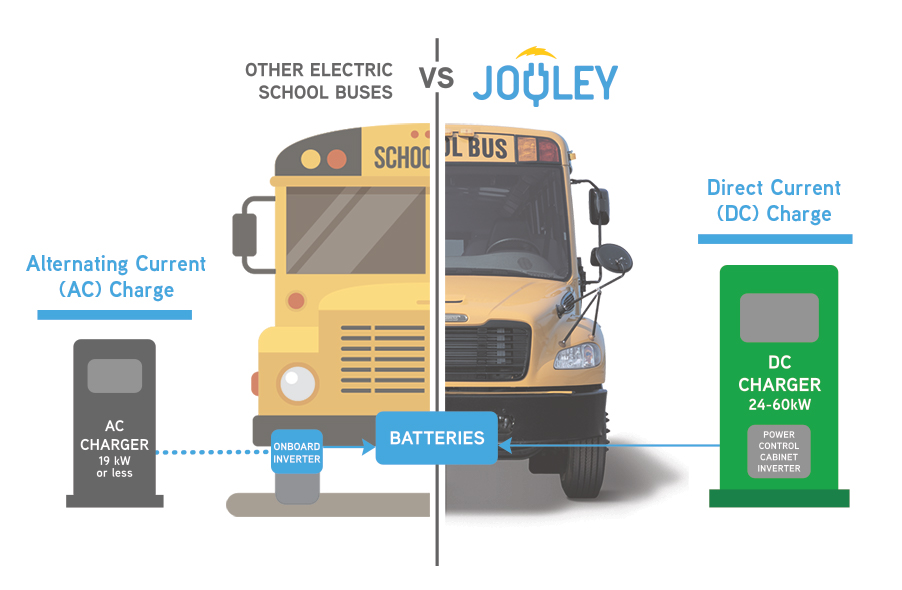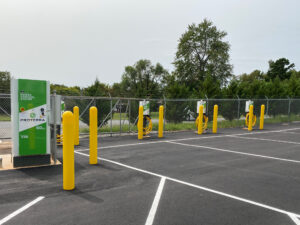
There are many things to consider when adding electric school buses to your fleet, but at the top of the list is how to charge them. The two basic types of chargers are AC and DC chargers and the difference between them comes down to five principles. Here are the fives things to know when choosing an AC vs. DC charger:
- CHARGE TIME: DC fast-chargers take just a little over three hours to completely charge a Jouley electric school bus. That’s significantly faster than an AC charger that would take 8-10 hours. You don’t want your bus on the charger longer than it’s on the road. Faster charge times means you don’t have an operations headache when there are early dismissals, longer or doubled routes, and other unexpected demands.
- DEMAND CHARGES: Energy is generally cheaper during low-use times, such as late night/early morning (managed charge times), and more expensive during peak use, such as late afternoon/early evening (demand charges). Demand charges can quickly cancel fuel savings from electric buses. DC chargers’ shorter charge times ensures fleets can limit charging to periods when rates are cheapest.
- BATTERY HEALTH: In order to preserve battery health, your bus battery needs to be engineered to accommodate higher-powered current from DC-chargers. The Jouley electric school bus has specific battery chemistry designed to accept higher DC charge and discharge rates and also has the longest standard warranty of any battery on the market.
- V2G OPPORTUNITIES: School districts can generate revenue and savings by partnering with utility companies on V2G programs. When school divisions aren’t using the buses for operations, especially during summer months, the energy stored on the buses’ batteries can supply the grid during peak hours. DC chargers offer bi-directional V2G power flow while AC chargers do not.
- PURCHASE PRICE: Higher power, larger chargers do require a larger investment. Our charging partner, Proterra, offers turn-key solutions for implementing the best charging infrastructure installation for your bus depot.

AC vs DC, level 2 or 3, V2G capabilities or not – you’ve certainly heard all these options and may have questions about what best accommodates operational needs and your specific electric bus. Incentives and grants through the Dominion Energy Electric School Bus Program and the DEQ Clean School Bus Program make electric school buses a real possibility for Virginia school districts. Our team is here to help you navigate not only choosing the best charger but also these programs and how you can purchase Jouley the electric school bus for your fleet.
